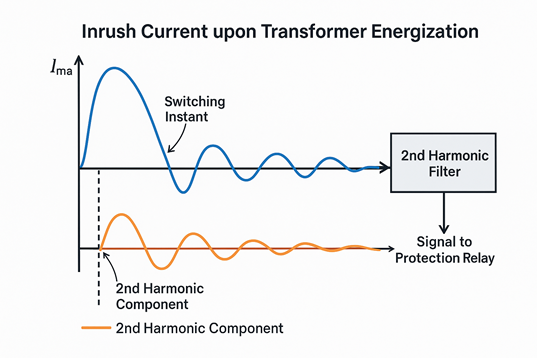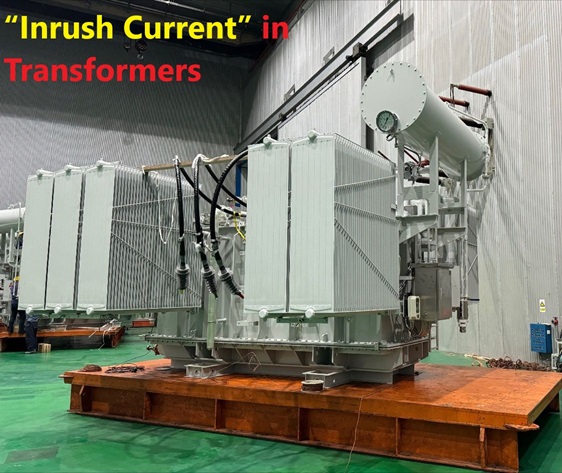What is Inrush Current in Power Transformers?
Inrush current is a common phenomenon in transformers, particularly during energization, and it can lead to nuisance tripping of protection relays if not properly accounted for.
1.Causes of Inrush Current
a.Residual Magnetic Flux:
When a transformer is de-energized, residual magnetic flux may remain in the core. Upon re-energization, this residual flux can combine with the new applied flux, leading to a high magnetizing current.
b.Flux-Current Relationship:
To establish the required magnetic flux during energization, a high magnetizing current is drawn—especially if the switching instant coincides with a zero voltage point while residual flux is at its maximum.
2.Factors Affecting Inrush Current Magnitude
The inrush current may vary from being close to the rated current to as high as 20 times the rated value. Key influencing factors include:
a.Absence of residual flux
b.Switching instant relative to the voltage waveform (e.g., switching at voltage zero-crossing can lead to peak inrush)
3.Risks and Challenges
a.Inrush current is unidirectional and largely confined to the primary winding.
b.Protection devices may interpret this as a fault condition, triggering false trips.
c.Magnitude can range between 5 to 20 times the rated current depending on transformer design and switching conditions.
4.Mitigation Techniques
a.Time Delay on Protection Relays:
Some systems implement a short intentional delay during energization. However, this method carries risk if a real fault occurs during the delay.
b.Second Harmonic Restraint:
A widely used technique involves analyzing the harmonic content of the current. Inrush current contains a significant second harmonic component, whereas fault currents typically do not.
Protection relays use second harmonic filtering to distinguish inrush from internal faults.
When second harmonic content exceeds a predefined threshold, the relay blocks tripping, preventing nuisance operations.

Conclusion
Proper detection and discrimination of inrush current are essential for reliable transformer protection. Using harmonic analysis, particularly second harmonic restraint, ensures selective and secure relay operation, minimizing the risk of unnecessary outages.


